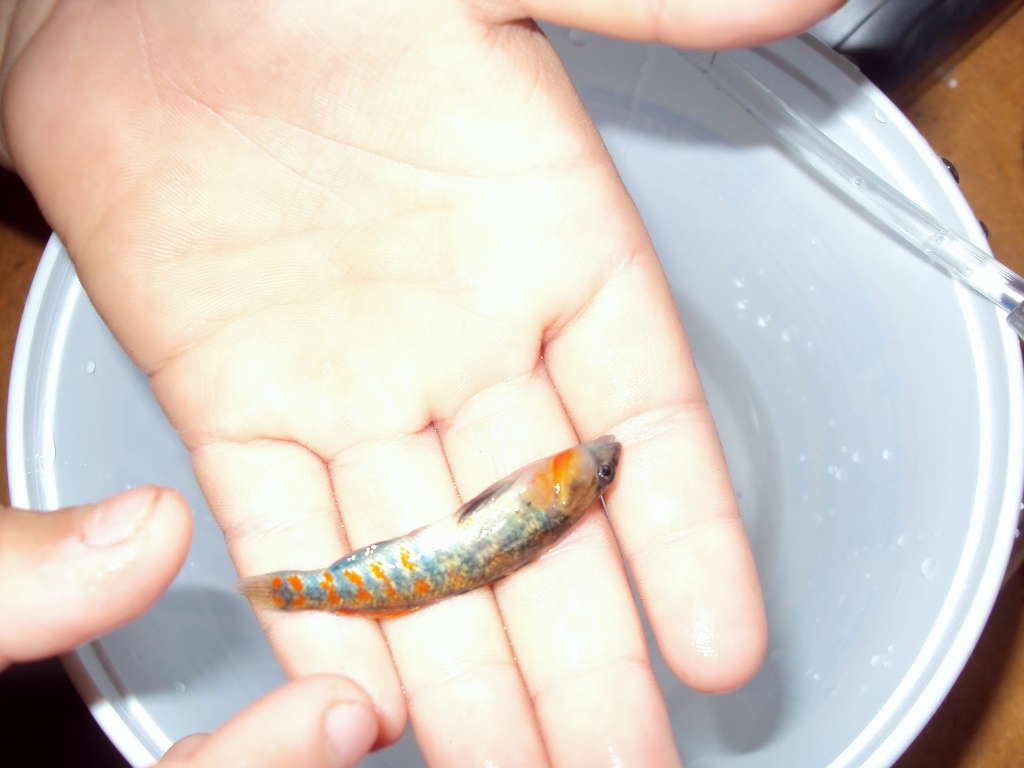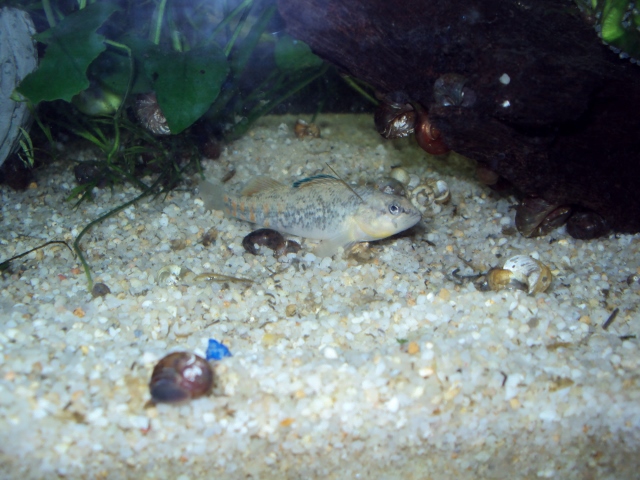Riffle fish?
#1
 Guest_ShelleyD_*
Guest_ShelleyD_*
Posted 31 October 2013 - 11:11 PM
So my question is, do darters and dace really need current in their tanks? We have 1 orangethroat darter already and he's been living happily in my 45 gallon tropical fish tank. He will be moving at least by spring into a temperate water tank with others of his kind and probably some of the dace, if we are able to get them. The tank I'm planning on keeping my fish in is 38 gallons, 36L x 12W x 20H. I don't have a powerhead but can get one if absolutely necessary. Also, the tank is in front of a window and I don't plan to get a light for the tank. Does the tank need a hood? Are the dace jumpers?
#2
 Guest_FirstChAoS_*
Guest_FirstChAoS_*
Posted 01 November 2013 - 12:54 AM
I have read that darters and dace, specifically orangethroat darters and southern red-belly dace, are riffle fish. However, we have found several of both types in shallow pools in our creek. Granted, when the creek has water it would technically be a riffle, but that doesn't happen very often and the creek is mainly small pools for the majority of the time.
So my question is, do darters and dace really need current in their tanks? Does the tank need a hood? Are the dace jumpers?
Darters and dace can do just fine in a tank without current. But current reduces the amount of fighting and risk of jumping. I am not sure on southern redbellies as I never kept the species. Their is no way to stop jumping, but current or a cover or both greatly reduce it,
As for darters being riffle fish, that idea kept me from catching tesselate darters for a few months as I sampled in the wrong places at first. Different darter species have diffe4rent water speed preferences and some may move between them at times. Many darters ARE riffle dwellers, but some like the swamp darter like still water. The tesselate prefers slow current (But I have seen them in riffles twice, both in early spring, not sure why). When I was in Ohio I was surprised how much the rainbow darter (a fish I thought was a riffle darter) was found in a variety of habitats from riffles to still water. Theirs even one lake in Minnesota that has them.
#3

Posted 01 November 2013 - 07:16 AM
Yes, dace are jumpers. They live in the small pool environment that you describe. And often to get to the next pool upstream (and better food or better conditions) they have to jump. In a tank this means they sometimes are driven to jump at the filter in flow. A power head lower in the tank may help.
#5
 Guest_ShelleyD_*
Guest_ShelleyD_*
Posted 02 November 2013 - 08:21 PM
Info I can find on headwater darters say they are in the upper Green River system? I'm kind of dumb on this, so where would that be located?
If this works, here are some other pictures of him.


#6
 Guest_ShelleyD_*
Guest_ShelleyD_*
Posted 02 November 2013 - 08:33 PM
#7
 Guest_jblaylock_*
Guest_jblaylock_*
Posted 02 November 2013 - 08:40 PM
Going by the pictures on this site: http://johno.myiglou...sh/darters.html he looks like an orangethroat to me and not a headwater. But I'm no expert.
Please do not go by that site. There is a lot of false information there.
#8
 Guest_jblaylock_*
Guest_jblaylock_*
Posted 02 November 2013 - 08:46 PM
Here's the fish for that area:
http://fw.ky.gov/kfw...=ScientificName
Based on this list, It could be either, kinda looks like a Headwater to me, but it's an orangethroat variant so it's hard to say 100%
#10
 Guest_jblaylock_*
Guest_jblaylock_*
Posted 02 November 2013 - 08:52 PM
http://fw.ky.gov/kfw...speciesInfo.asp
You can find quads by county here:
http://kgs.uky.edu/k...topo/TOPOX.html
Next, take good photos, buy a Peterson's Field guide, and if you still can't ID it by those resources, post here.
Peterson's:
http://www.amazon.co...ield guide fish
There is a little info on my website as well: www.kycreeks.com
#12
 Guest_jblaylock_*
Guest_jblaylock_*
Posted 03 November 2013 - 03:54 PM
So how can I tell if the ones I (hopefully) find are the same type?
David Cravens sent this to me.
https://drive.google...dit?usp=sharing
Based on my experience, I would say that's a Headwater Darter.
#16
 Guest_jblaylock_*
Guest_jblaylock_*
Posted 05 November 2013 - 11:59 AM
One thing I noticed, he is very pale, except for his dorsal fin. The dorsal fin has a blue 'outline' on it now. I haven't noticed it before, I don't know what's causing it to turn blue.
Can you get an updated photo? You'll find that most the fish, especially darters, will loose/change color once you get them in the aquarium. Some hold colors better than other (Redlines, Bluebreast, Orangefin). Seems like the Nothonotus family holds color well. Different lighting, temp, water, etc... seem to affect their coloration.
I've found that most O-throats do tend to get pale in the aquarium.
#17
 Guest_ShelleyD_*
Guest_ShelleyD_*
Posted 06 November 2013 - 10:39 PM
As an aside, he loves to eat snails, my son has seen him sucking snails out of their shells! Sure helps the assassins keep up on the population lol
Here's a pic from today of him

Edited by ShelleyD, 06 November 2013 - 10:41 PM.
#20
 Guest_jblaylock_*
Guest_jblaylock_*
Posted 07 November 2013 - 02:20 PM
I would either remove the heater or turn it down. Are there other fish in the tank?
Thrided...is that a word, don't think so 3ed? No, okay, nevermind
Room temp is more than warm enough for these guys. You are right though, the light color is likely due to the surroundings, lighting, and temperature. The blue on the fin looks right to me.
Reply to this topic
1 user(s) are reading this topic
0 members, 1 guests, 0 anonymous users









